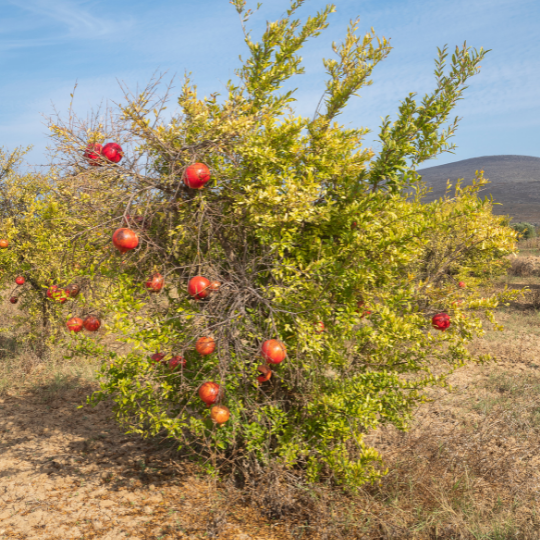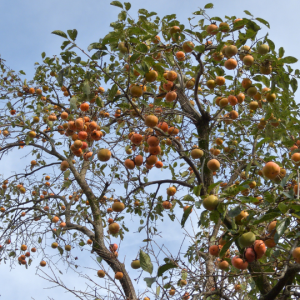
Punica granatum
Pomegranate
A beautiful flowering fruit tree suitable for small to large size gardens.
Additional Information
Information | Details |
|---|---|
Botanical Name | Punica granatum |
Common Name | Pomegranate |
Also Known As | Pomegranate |
SA Tree No | |
Tree Type | Evergreen, Semi-Deciduous |
Attracts | Birds, Bees, Butterflies |
Features | |
Flowering Season | Autumn |
Focal | No |
Fragrant | No |
Frost Tolerance | Hardy |
Fruiting Season | Summer, Autumn |
Growth Rate | Fast >500mm |
Minimal Leaf Shedding | No |
Origin | Exotic |
Soil pH | |
Root System | Not Aggressive |
Soil Type | Sandy, Clay |
Suitable Garden Size | Small, Medium, Large |
Suitable Planting Area | Semi-Shade, Full Shade |
Fruit, Citrus & Nut Trees Pricing
Bag Size | Price Range Incl. VAT |
|---|---|
4L / 5L
| NA
|
7L / 10L
| R40-R400
|
20L
| R300-R500
|
50L
| R600-R800
|
100L / 200L
| R900-R2000
|
Description
The pomegranate bears round, yellow-green to dark red fruit and produces red, white and orange flowers. It is evergreen to semi-deciduous with a shallow, taproot system.
Pomegranate plants can be grown into medium size ornamental trees or shrubs in gardens or parks. It can also be used for indoor or container planting.
- Tolerates temperatures as low as -12°C
- Estimated height: 3-6m
- Estimated width: 3-6m
- Planting distance: 5m
- Drought-resistant
- Low chilling required
Cultivars: Wonderful.
Pollen compatibility: Self-pollinating.
Water requirements: Once established only water occasionally.
Fun facts: Pomegranate fruit is eaten as is or can be used in baking, cooking, juices, smoothies and garnishes.
















